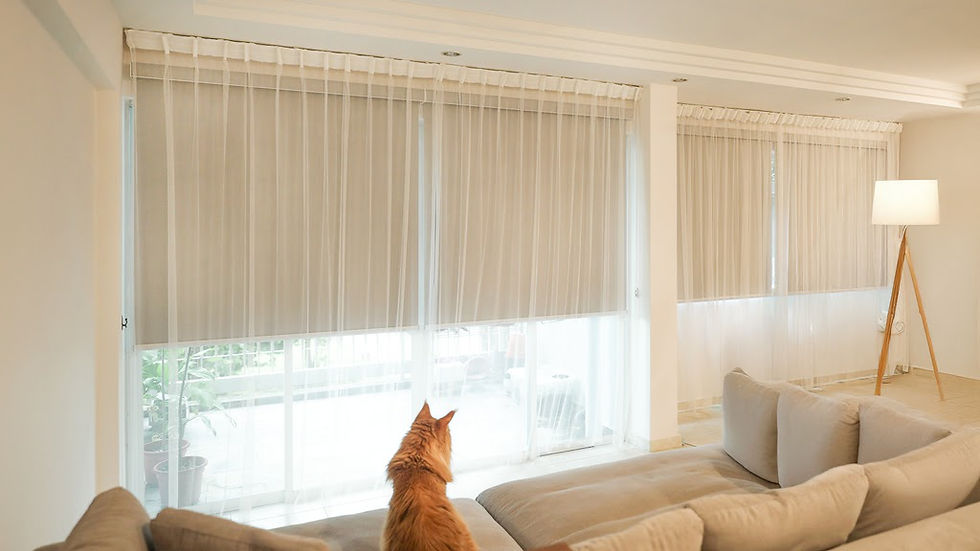Is Silent GPU Any Good? Palit GTX 1650 KalmX
- A2K

- Jun 10, 2020
- 4 min read
Updated: May 29, 2022
This is the latest edition to their KalmX lineup – GTX1650. This card has no fans and is completely silent. It is aimed at 1080p gaming and costs between 160 and 170 USD depending on the retailer. We took it through its paces to see how it delivers and if it has any headroom for overclocking.
Let’s see what you get for your money.
The card itself is very compact, it is two slots high and is only 178mm long so you can fit it in virtually any case. This card does not require any additional power as it is rated at 75W which it receives through PCIE interface.

On the back there are two display ports 1.4 and one HDMI 2.0, so you could run 3 monitors at the same time if required.
When it comes down to performance, it is based on Turing architecture and is clocked at 1485MHz with a 1665MHz boost. It comes with 4GB of GDDR5 memory clocked at 8Gbps.

Cooling wise you can see two thick heatpipes with a large array of aluminium fins going across and past the PCB creating much needed space for heat dissipation.

Let’s check out how it delivers. Here you can see what we are using for testing.

Something to note – our case has two front intake fans and one exhaust on the back so there is some airflow but all fans are set to low speed and are completely inaudible. We are using a higher end CPU to eliminate bottlenecks and show the true maximum performance of the GPU.
For overclocking we have used MSIs Afterburner utility and pushed core clock by +220MHz and memory clock by +450MHz. We have tried a little more but the card would become unstable in some games so we settled for this.

In Total War Three Kingdoms at 1080p with settings set to medium we are seeing an average of 58.5 FPS while at stock. Then we applied overclock and it managed to average 64.7 FPS which is a 10% improvement.

In Formula 1 this card delivered over 200 frames at medium so we ran it at ultra high and still managed to average 71 FPS with overclock pushing it by another 7% to 76 FPS.

Next we tested Shadow Of The Tomb Raider at 1080p medium settings with motion blur turned off, here we have an average of 56FPS while at stock and 62FPS while overclocked. Yet another 10% improvement. For these titles overclock is essential. We monitored the temperatures and found in both scenarios it runs at around 60 to 62C. Basically here overclock is a free performance boost without any downsides.
As this is a budget card, I can imagine people playing less triple A titles and more online games so we tested it in League of Legends and here it shreds. We are getting past 300 FPS in 1080p and around 200 FPS in 4k with all the settings maxed. Here we can see during 1080p the card is hitting only 50% utilization and 95% at 4K. Clearly in a title like this CPU plays a much bigger role.


We also ran 3D Mark Time Spy and found overclocking provides almost 11% improvement which is consistent with our earlier tests.

It was strange that the temperatures did not increase from overclocking the card so we did a stress test using FurMark at both – stock and overclock – for over 10 minutes until it reached stable temperature and got the same results.


At stock GPU would hit around 1700MHz and deliver 44FPS on average.
While overclocked it would hit around 1845MHz and deliver 49FPS on average.
In both tests it would hold between 61 and 62 degrees C and keep below the 75W power consumption. That is pretty power efficient.
We wondered if apart from gamers who like silent systems – would this card benefit creators and/or content consumers? The next few tests check for exactly that. We pulled out one of our 4k clips and transcoded it to 1080p just using CPU, then pushed the work onto the GPU by enabling the built in NVENC encoder, this has delivered us a 22% improvement in transcode times. Overclock here bears no significance.

We did the same clip and transcoded it to 4k and the difference from CPU to NVENC is a whopping 55% with only 2% improvement by overclocking it. That is certainly great for creators, but the same can be said for people who do game streaming, providing it’s not a triple A title as we have demonstrated earlier. You don’t really have any spare horsepower within the GPU to do both.

Another great use case is for people who have a dedicated PC in their living room that may be used as a media server – this GPU supports NVENC, therefore you can enable hardware acceleration and it would be sufficient to speed up transcoding to watch 4k or even 8k movies on the fly and it can support up to 3 streams.

To summarize: this is certainly a great card for those looking for a completely silent system and, fortunately for Palit, there is no competition for their passively cooled GPUs. What you get is a solid performance for 1080p gamers, video creators and consumers with longer lifetime and silent operation as there are no moving parts. The only thing we would recommend is to immediately overclock it.








Comments